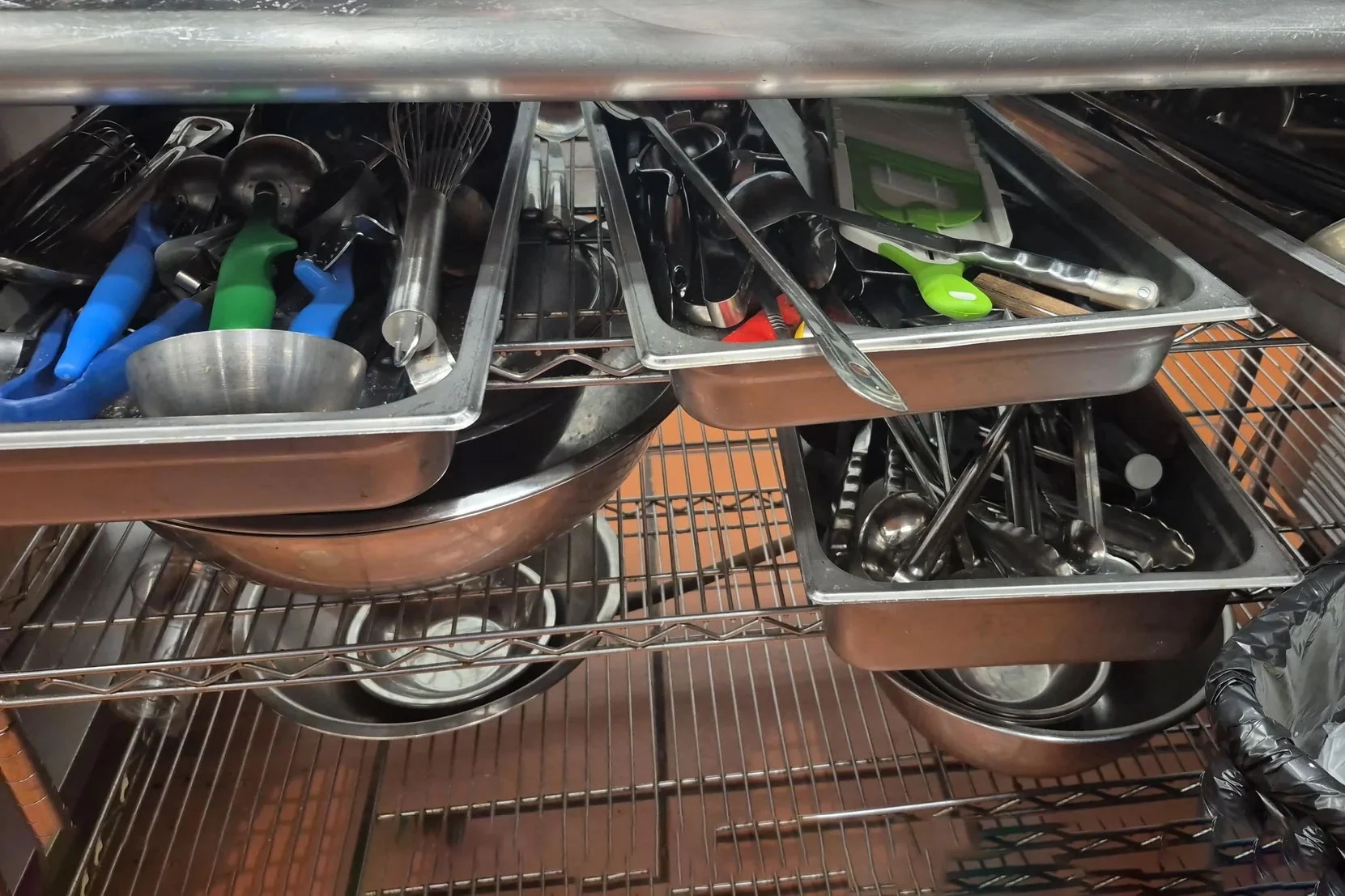Are you tired of rummaging through overcrowded kitchen drawers? As a kitchen organization specialist, I’ve helped countless homeowners transform their chaotic utensil drawers into perfectly organized spaces using compact utensil organizers. The secret lies not just in the tools you choose, but in how you use them. Whether you’re working with a tiny apartment kitchen or simply want to maximize your storage space, compact utensil organizers are the game-changing solution you’ve been looking for.
1. The Initial Purge: Your First Step to Organization
Before buying any organizational tools, start with:
- Take everything out and group similar items together (stirring spoons, spatulas, measuring tools, etc.)
- Remove duplicates unless you genuinely need multiples
- Dispose of damaged or rusted items
- Remove items you haven’t used in the past year
- Check for outdated plastic utensils that might need replacement

2. Essential Organization Solutions
Counter Solutions:
- Large utensil holder crock (ceramic or stainless steel) for frequently used items
- Consider a rotating utensil holder for better access
- Divided utensil organizer for separating cooking tools by category
Drawer Solutions:
- Expandable drawer organizers with multiple compartments
- Bamboo drawer dividers for custom spacing
- Double-tier drawer organizers to maximize vertical space
- Drawer liner mats to prevent sliding
Cabinet Solutions:
- Over-the-door organizer racks
- Pull-out cabinet organizers
- Vertical dividers for baking sheets and cutting boards
- Hook systems for hanging tools
3. Strategic Organization Process
Step 1: Frequency-Based Organization
- Counter: Daily-use items (spatulas, wooden spoons, tongs)
- Top drawers: Regular-use items (measuring spoons, whisks, peelers)
- Lower cabinets: Occasional-use items (specialty tools, extra utensils)
Step 2: Category-Based Organization
- Cooking utensils (spoons, spatulas, tongs)
- Measuring tools (cups, spoons)
- Prep tools (peelers, graters, zesters)
- Baking tools (rolling pins, pastry cutters)
4. Maintenance Tips
- Review and reorganize every 3-6 months
- Clean organizers monthly
- Replace worn-out organizers as needed
- Label sections for family members to maintain order
- Implement a “one in, one out” rule for new utensils
5. Space-Saving Hacks
- Use magnetic strips for metal utensils
- Install hooks under cabinets
- Utilize the inside of cabinet doors
- Consider wall-mounted rail systems
- Use tension rods for vertical storage
6. Investment-Worthy Organizational Tools
Must-Have Items:
- High-quality drawer organizers ($15-30)
- Sturdy utensil crocks ($20-40)
- Drawer liner mats ($10-15)
- Cabinet door organizers ($25-50)
- Pull-out drawer systems ($40-100)
7. Long-Term Success Tips
- Keep frequently used items within easy reach
- Store items near where they’re used
- Consider workflow when organizing
- Make sure all family members understand the system
- Regular maintenance is key
Final Thoughts
Investing in the right compact utensil organizers isn’t just about tidying up – it’s about transforming your kitchen into a more efficient and enjoyable cooking space. By following this guide and choosing appropriate compact utensil organizers for your specific needs, you’ll create a kitchen that’s not only organized but also optimized for your cooking style. Remember, the key to success lies in selecting the right compact utensil organizers and maintaining the system you create. Your journey to a perfectly organized kitchen starts with that first step of choosing the right compact storage solutions.

